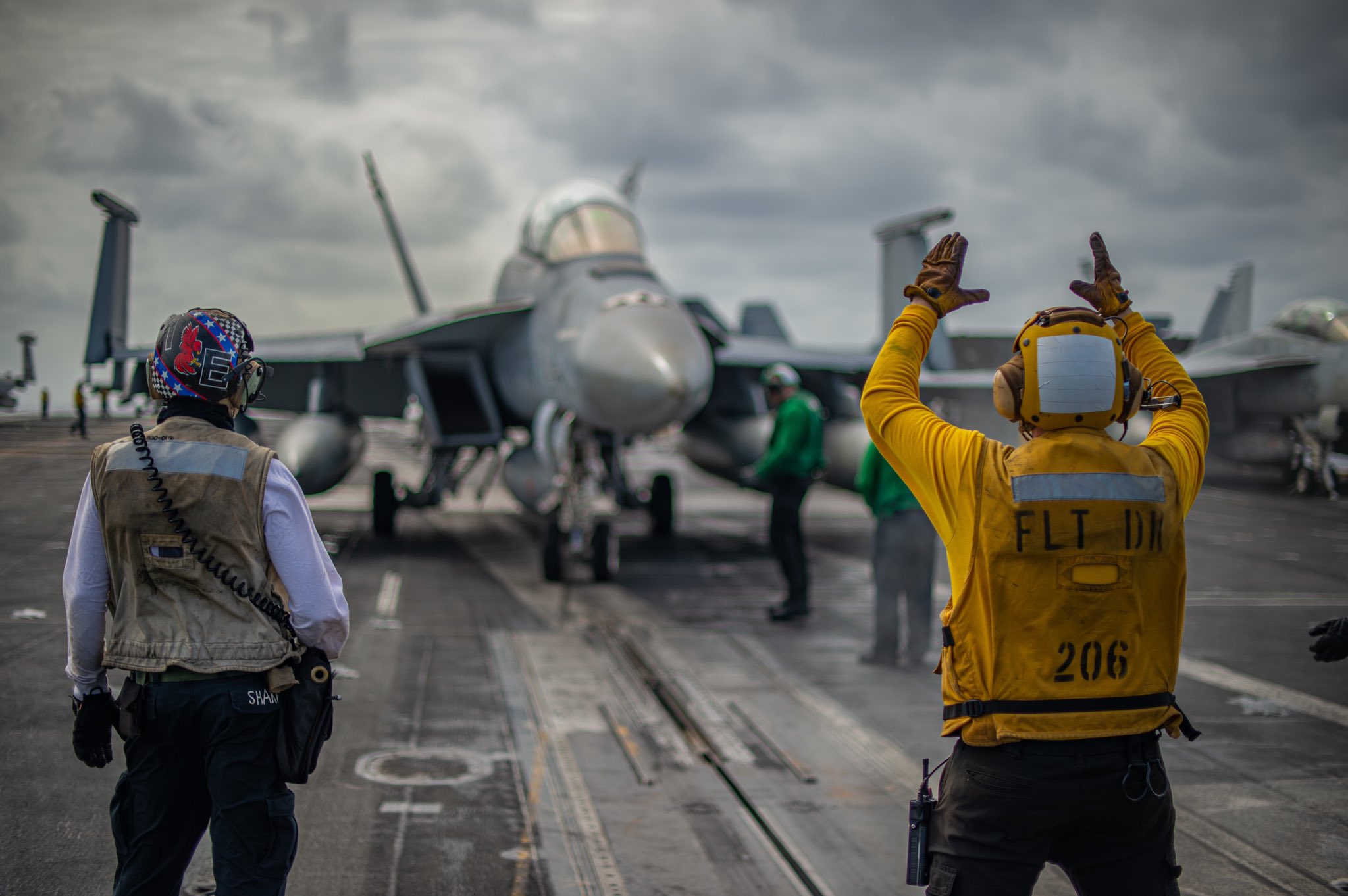The US Navy announced on January 13 that the Nimitz Carrier Strike Group (NIMCSG) had started operations in the South China Sea amid rising tensions with Beijing.
The group began operations on January 12, marking the first time the USS Nimitz CSG entered the South China Sea during the group’s 2022-2023 deployment. The strike group is currently carrying out routine operations in the region.
This includes maritime strikes training, anti-submarine operations, combined and integrated multi-domain training with surface and air elements, and flying operations with fixed and rotary wing aircraft in the area, according to the 7th Fleet news release.
According to Rear Adm. Christopher Sweeney, commander of Carrier Strike Group (CSG) 11, the Nimitz Carrier Strike Group can deliver integrated lethal and non-lethal effects from space to undersea across every axis and every domain.
“Our sailors’ tenacity and warfighting prowess are unmatched and a testimony to our country’s determination to work alongside our Allies and partners to maintain free and open seas,” Sweeney added.
Meanwhile, a defense official told CNN that two Chinese warships are already pursuing the US group, which comprises an aircraft carrier, a guided missile cruiser, and three guided missile destroyers.

The move aligns with the US military’s expanding regional presence to stave off China, rapidly modernizing and boosting its military and nuclear capabilities.
Washington is also strengthening its military cooperation with its regional allies. For instance, the US and Japan recently agreed to increase the number of US Marines stationed on Okinawa, equipped with cutting-edge anti-ship and intelligence capabilities.
In response to what they perceive as China’s growing aggression in the region, the two partners unveiled several new initiatives to foster greater cooperation between their military.
Speaking in Washington on Wednesday with Secretary of State Antony Blinken and their Japanese counterparts, Defense Secretary Lloyd Austin said that the United States and Japan share a common vision for maintaining a free and open Indo-Pacific, and what they are doing is pointing in that direction.
US-China Tensions In The Region
China claims practically the entire South China Sea using a nine-dash line found illegitimate by an international court in 2016. Beijing has ignored that ruling. Instead, it is constructing artificial islands and stepping up military actions in the sea region disputed by the Philippines, Malaysia, Vietnam, Brunei, and Taiwan.
Furthermore, Beijing has repeatedly chastised the US for being a “security risk maker” in the region, claiming that US Navy operations are undeniable proof of its hegemony in the navigation and militarization of the South China Sea.
The US and China’s forces often lock horns in the region as the tensions between the two countries are rising. Furthermore, the Chinese Navy frequently shadows American warships in the South China Sea.
In November 2022, the Chinese military even asserted that it expelled a guided missile cruiser, USS Chancellorsville after it “illegally intruded” into waters near the Spratly Islands in the contested South China Sea.
At the time, the US responded sharply, labeling the Chinese account “false” and the most recent in a long line of attempts by the People’s Republic of China to distort lawful US maritime operations and press its excessive and unjustified maritime claims at the cost of its Southeast Asian neighbors.
The US-guided missile cruiser was patrolling in the South China Sea in compliance with international law, the US Navy said.
Recently, a Chinese J-11 fighter jet engaged in an “unsafe maneuver” when it intercepted a US RC-135 reconnaissance plane over the South China Sea.
According to the US, the Chinese jet drew near to the larger, slower reconnaissance jet, the RC-135 Rivet Joint, and forced it to execute evasive action.
In response, the People’s Liberation Army gave its account of the intercept, claiming the US plane had “abruptly changed its flight attitude” and engaged in a “dangerous approaching maneuver.”
The incident brought attention to the tensions in the South China Sea, where Beijing has utilized its artificial fortified islands to assert a claim of sovereignty not recognized by the US or its allies.
- Contact the author at ashishmichel(at)gmail.com
- Follow EurAsian Times on Google News